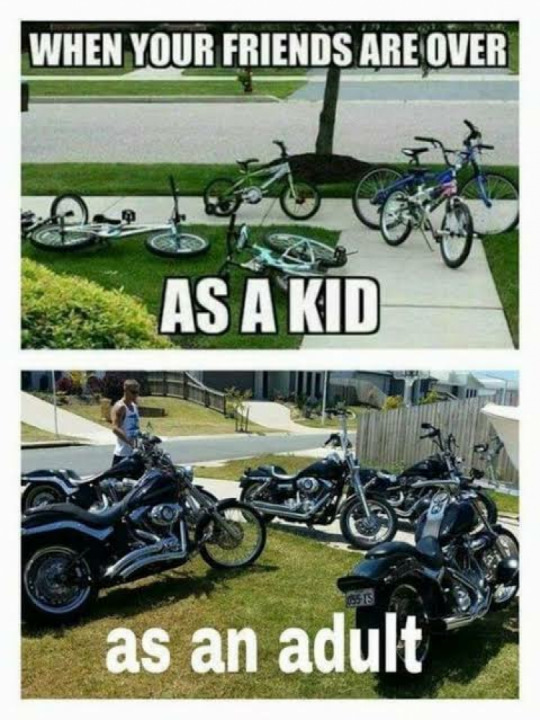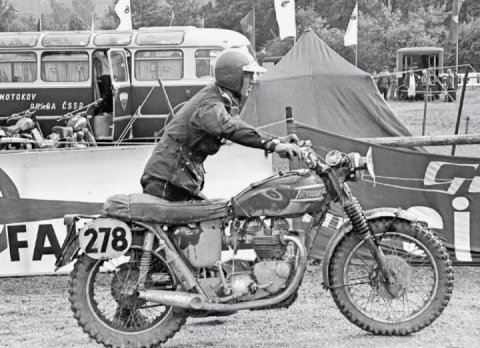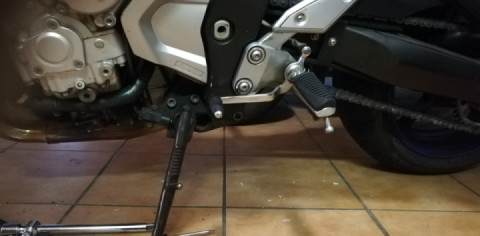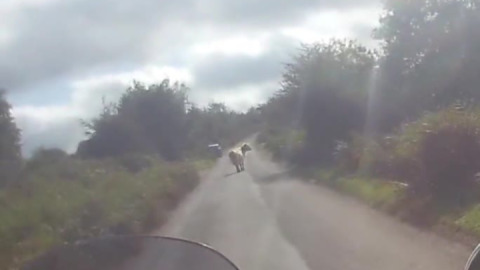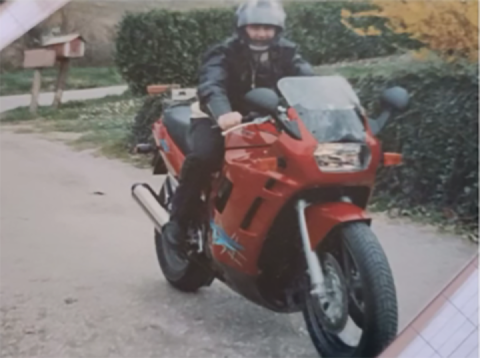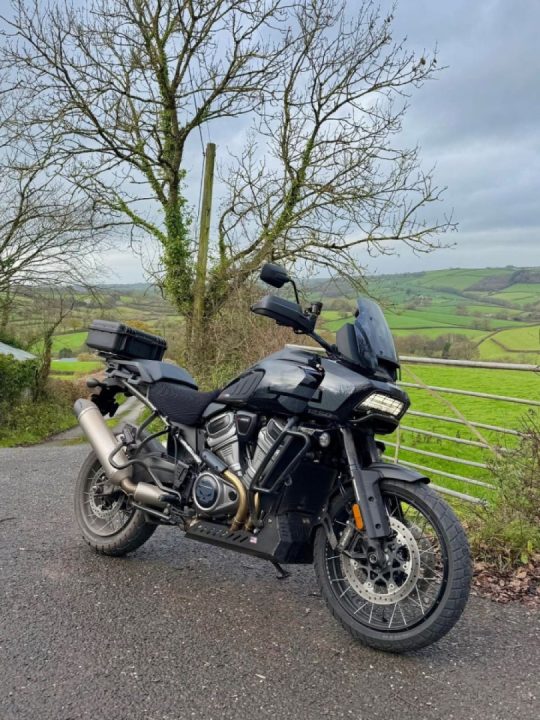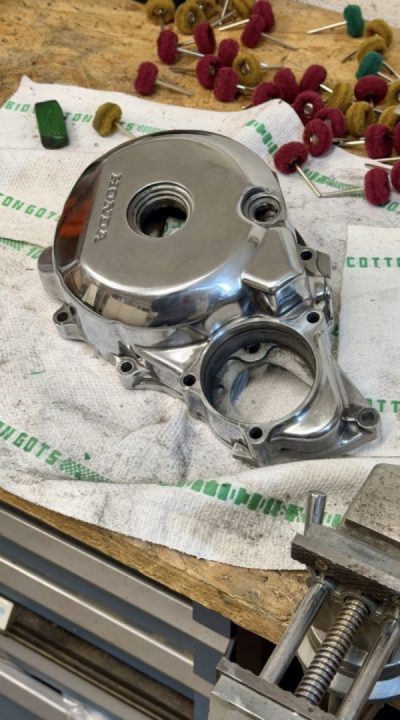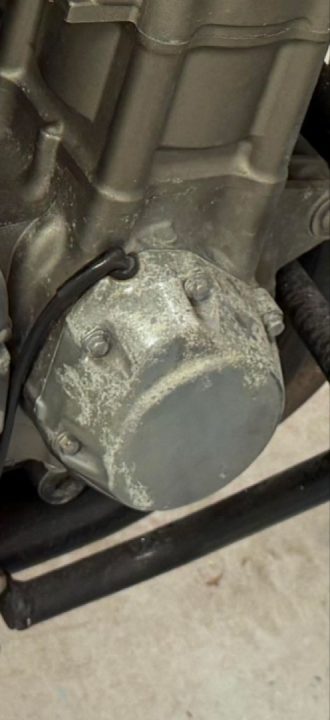Vicars and motorbikes: pastoring the young then and now
I went to the funeral of the Revd Graham Hullett who died at the age of 80. Fr Graham had been Club Leader of the 59 Motorcycle Club, a remarkable piece of youth work from the early 1960’s, and at the time something only the Anglicans would have done.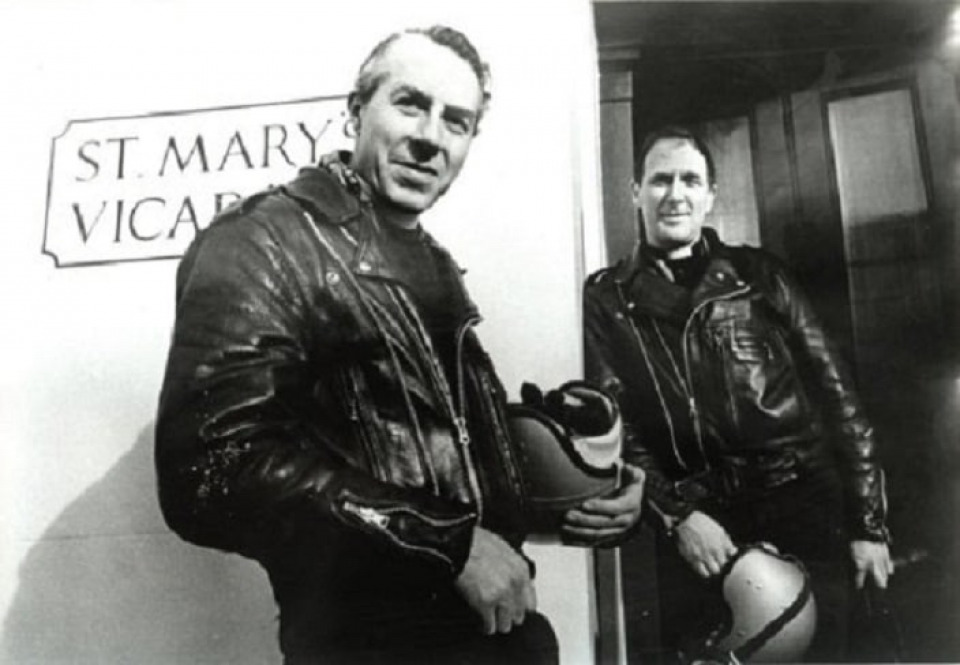
The original 59 Club had been founded at St Mary of Eton, Hackney Wick, by the then curate of the parish, Fr John Oates. There was a change of Vicar, and Fr Bill Shergold, seen in the foreground of this picture, came to St Mary of Eton. Fr Bill rode a motorcycle, largely as a convenient way of getting around London, but at a time when a whole group of young people were taking to bikes as part of their image: they were the ‘Rockers’. Sections of the press wrote lurid reports about their lifestyle and their clothes, and they were unwelcome in coffee bars and youth clubs. They did not, of course, frequent pubs, since many of them began riding bikes at the age of 15, and landlords certainly did not want ‘youngsters’ on their premises.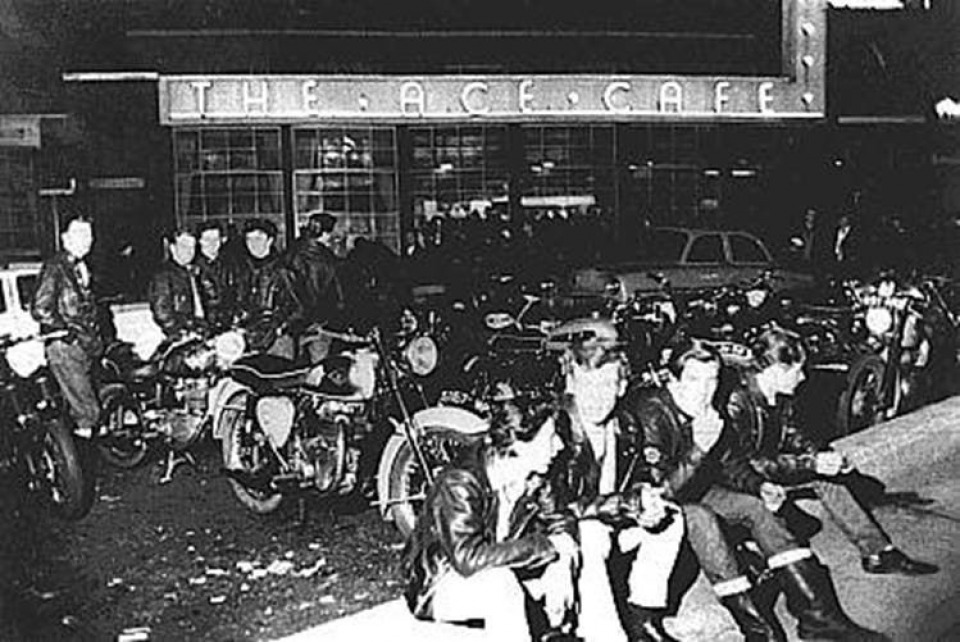
Large numbers of young ‘Rockers’ gathered at the Ace Cafe on the North Circular. Lacking an upper speed limit (and the heavy traffic of today) the road was perfect for competitve trials, as the young riders raced their Triumphs, Nortons and BSA’s. The Ace, basically a transport cafe, tolerated their presence!
Fr Bill Shergold was not the first person to think of a service for motorcyclists. It had been done elsewhere: but he was the first priest to go to the Ace Cafe. He wrote afterwards that he rode up and down several times before riding on to the forecourt and distributing invitations to a service at St Mary of Eton. About 200 motorcyclists came to the service.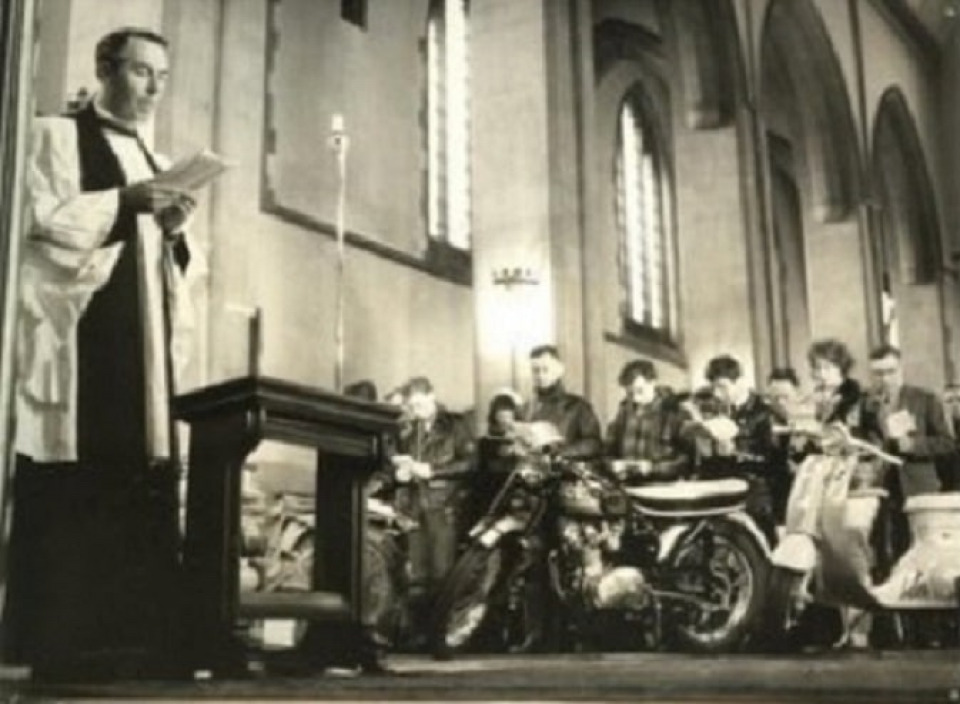
From then on they began to drop in at St Mary of Eton, and soon were forming a large section of the 59 (youth) Club. The press were fascinated – then, as now, they found it difficult to believe that priests (and nuns) were real people.
But in the real world there was widespread approval of what Fr Bill was doing. I recall my parents at the time being fascinated and enthused by his work. But then, fifty years on, it is hard for us to realise that the youth work of the Church of England in the 50’s and 60’s was highly regarded and often superior to anything being done in the ‘state sector.’ Fr Graham Hullett joined Fr Bill when the Club moved to St Mary’s Paddington, and it was Fr Graham who oversaw the Club move into its own premises in the Parish Hall of the (soon to be closed) St Augustine, Haggerston, in south Hackney. Fr Bill had remained a parish priest throughout these years, and now moved to Dover. He was not allowed to escape from his reputation and was persuaded to form the 69 Motorcycle Club. (Both 59 & 69 Clubs are alive and kicking today, but that’s another story)
Fr Graham became Club Leader while continuing to be priest towards the remnant congregation of St Augustine’s, and to say Mass for the Sisters at Haggerston Priory.In later years Fr Bill wondered how on earth he had become ‘Farv’ to such a huge number of young people. And he was quite sure that such an initiative by an ordinary parish priest would not be possible in today’s society. Certainly the stories of Fr Graham’s ministry just a few years into the Club’s history seem to have a harder ‘edge’ – as do those of the Birmingham priest, the Revd David Collyer.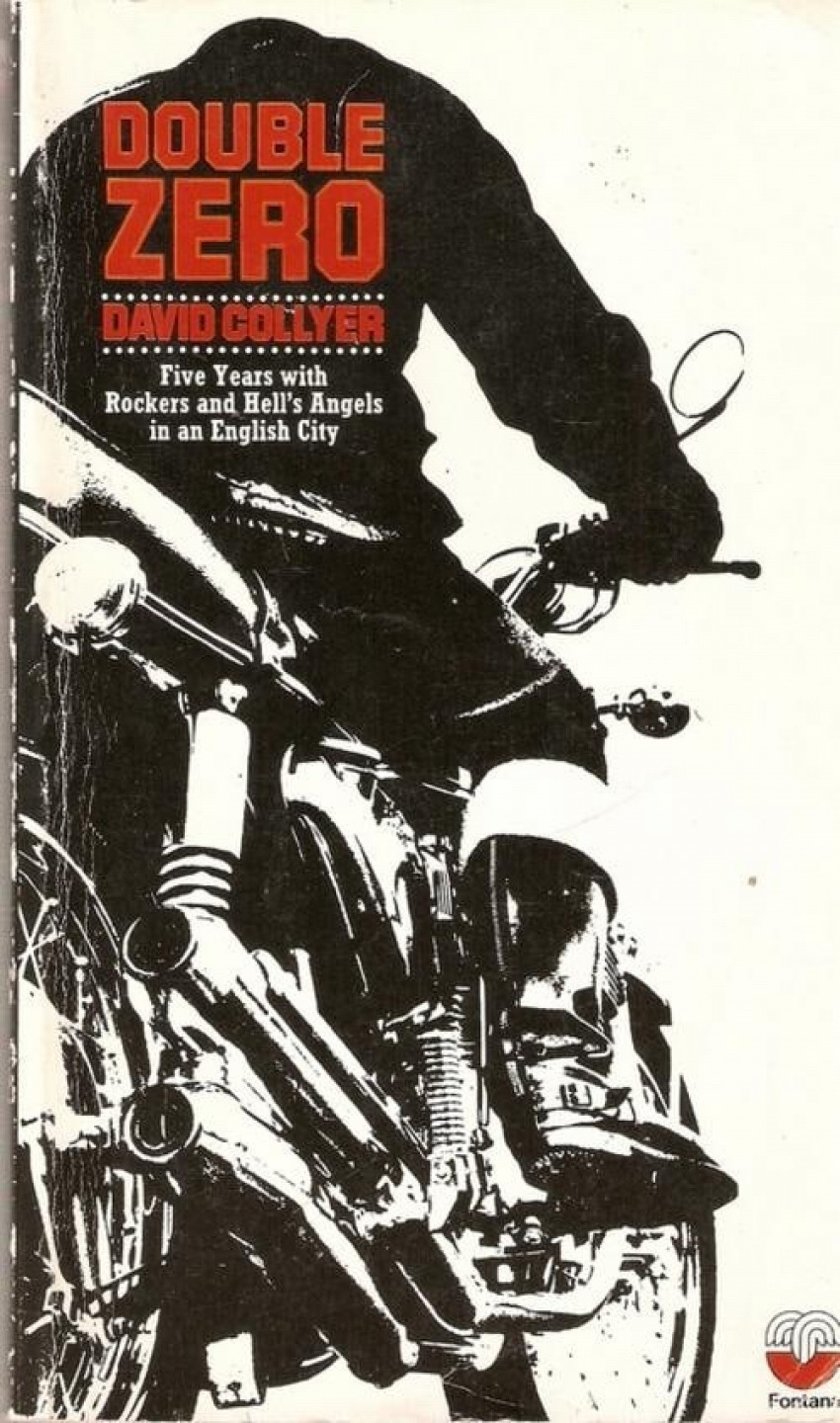
Collyer was a Youth Worker for Birmingham Anglican Diocse, and not himself a motorcyclist. His book ‘Double Zero’ begins with a pretty frightening attack on his club by armed ‘Hell’s Angels’. The world of young people was moving on and with a speed inconceivable just a decade before. And ten years into the future the confidence of the Church in its pastoral care of young people would severely challenged.
During the 1960’s there was a dramatic sea-change in the way that the Church of England functioned vis-a-vis the nation. It has been described by Callum Brown in the title of his book, “The Death of Christian Britan”. He points out that, although the British had largely ceased to go to church regularly on Sunday, they continued to marry in church and to have their children baptised. A basic knowledge of the key stories of the Bible, and a local knowledge of the Church and its ways had been learnt from parents and in school. . Many pictures of the 59 Club in those early days show Fr Bill officiating at the weddings and baptisms of Club members and their children. During the 60’s and 70’s this link between Church and people was broken. It is often said that in a less deferential age the authority of every institution – state, church, school, parents – was questioned. We can see this in the change of interviewing techniques from the 1960’s onwards; we can see it in the rise of satirical humour on the television; and we can see it in the change of image projected by the youth celebrities over the period. A comparison between Cliff Richard and the Beatles is instructive.
Commercial forces quickly identified ‘teenagers’ as a source of income ripe for picking. To exploit young people and relieve them of their money, the ‘generation gap’ was created. They were distanced from the caution of parents brought up in the war years, from the influence and moral teaching of the Church. Their money was to be spent on fashion and records, and soon on drugs. Sexual ‘liberalisation’ divided them from an older generation, but made them vulnerable to predatory behaviour. As the Tablet wisely asked in a recent editorial, ‘Was (Jimmy Savile) helped by a laissez-faire attitude to teenage sexuality, on the part of the media particularly but also large swathes of the culture in general, which signalled to Savile’s victims that in the new and exciting post-Sixties world of sexual liberation, sex with pop stars, disc jockies and similar TV celebrities was only to be expected, and even worth having? If that was true, then the grooming was not just by Savile but by an entire industry with its fingers on the pulse of popular culture; and the blame extends to all who went along with it.’ (Tablet 19th January 2013)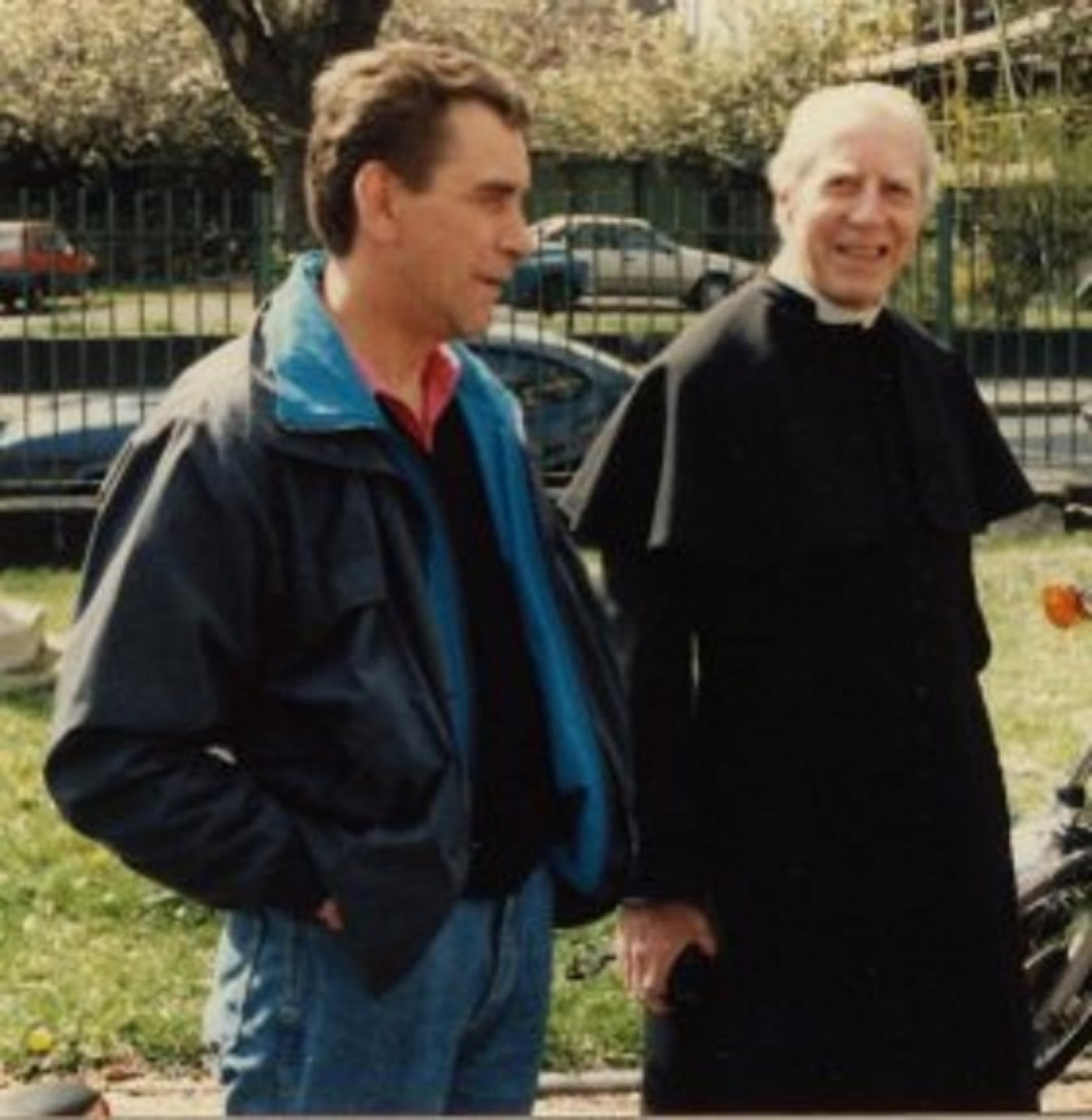
I am not in touch now with church-based youth work, which seems to use its resources for the support and nurture of young Christians, in the parish, at school and through chaplaincies at College and University. This is surely right. There is a vast gap today between the life-style which the Church asks of its young people, and what is considered ‘normal’ in our society: the pressure to conform to the majority behaviour is huge. Endless propaganda presents these modern ‘lifestyle choices’ as a great exercise in ‘freedom’: nothing could be further from the truth. It is a brave youngster who chooses to live a counter-cultural life, according to the precepts of the Gospel. They deserve our support, our prayers and our encouragement. Those lay people, priests and religious who have the very special gifts needed to minister among today’s young generation need the Church’s backing and proper resourcing.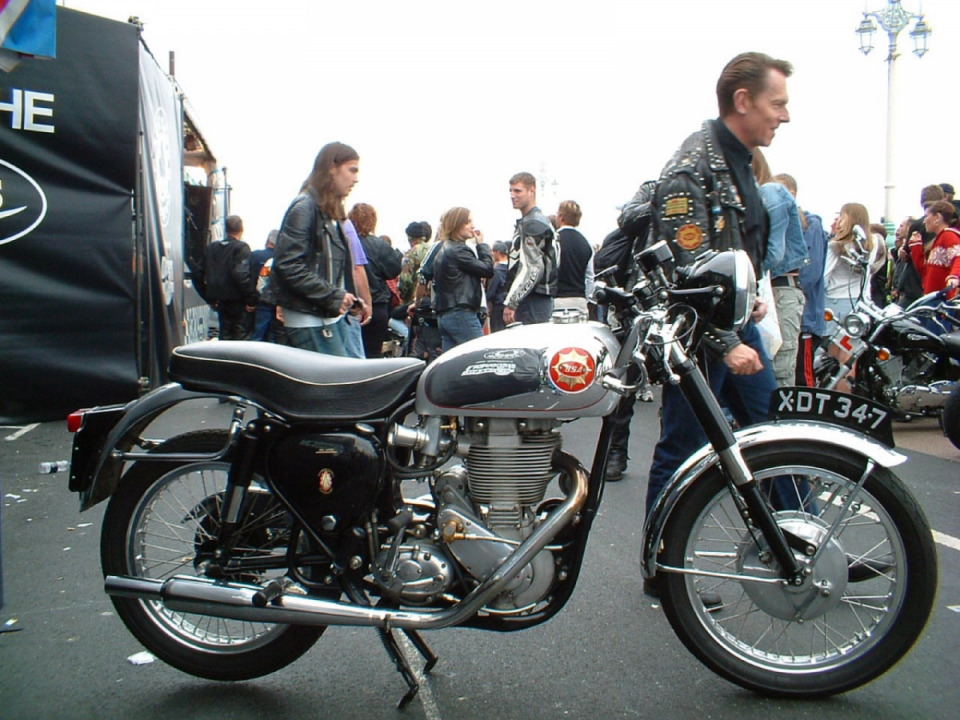
 Follow
3.1K
Follow
3.1K



